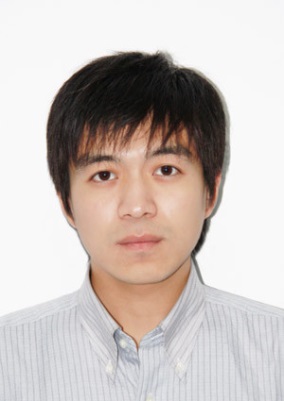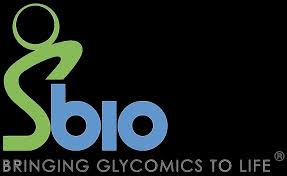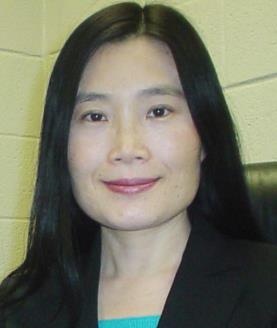Theme: Glycobiology: The bitter side of the sweet world
Glycobiology 2016

ConferenceSeries Ltd feels great to invite you all to attend “2nd Glycobiology World Congress (Glycobiology-2016)” which is going to be held during August 29-31, 2016 at Atlanta, USA on a theme “Glycobiology: The Bitter Side of Sweet World”. Glycobiology-2016 welcomes biochemists, researchers, molecular biologists, industry experts, delegates, sponsors and exhibitors from all over the world to the extraordinary splendid city of Atlanta, USA.
Join us in Atlanta and experience the World's Greatest Biochemist Scientist Meet.
ConferenceSeries Ltd invites all the participants across the globe to attend the 2nd Glycobiology World Congress (Glycobiology -2016) during August 29-31, 2016 at Atlanta, USA.
The conference was marked with the attendance of Editorial Board Members, Scientists, young and brilliant researchers, business delegates and talented student communities representing more than 25 countries, who made this conference fruitful and productive. Glycobiology-2016 mainly concentrates on Role of glycans and there Infectious Diseases, amalgamating the branches of Biochemistry where the specialization deals with the diagnosis and treatment of Diseases and its related fields. Glycobiology -2016 hosted by OMICS Group Meetings which is a three day event consisting of a scientific program , comprehensive talks, special sessions, oral & poster presentations of peer-reviewed contributed papers and exciting and innovative research products which can be exhibited for the further development of Glycobiology. We provide a platform where you can exchange your knowledge and experiences with the developing trends in the related fields of Glycobiology. Glycobiology -2016 will schedule and coordinate all meetings with our Editorial Board Members and other experts in the Glycobiology field across the world. The scientific program paves a way to gather visionaries through the research talks and presentations and put forward many thought provoking strategies on Glycobiology-2016.
Glycobiology conference -2016 is designed to meet all renowned and eminent speakers from all around the globe with delegates, exhibitors, industry experts and work shop symposiums.
For more details: http://glycobiology.conferenceseries.com/
Scientific Sessions:
Track: 1 Glycans in Diseases and Therapeutics
The beginning of the 20(th) century marked the dawn of modern medicine with glycan-based therapies at the forefront. However, glycans quickly became overshadowed as DNA- and protein-focused treatments became readily accessible. The recent development of new tools and techniques to study and produce structurally defined carbohydrates has spurred renewed interest in the therapeutic applications of glycans. Glycan Analysis review focuses on advances within the past decade that are bringing glycan-based treatments back to the forefront of medicine and the technologies that are driving these efforts. These include the use of glycans themselves as therapeutic molecules as well as engineering protein and cell surface glycans to suit clinical applications to that of databases providing glycoenzyme data. Glycoconjugates offer a rich and promising frontier for developments in the academic, biopharmaceutical, and medical fields.
Martin Dalziel and their colleagues at Oxford University learned about glycans in the context of pathogen invasion, cancer and autoimmunity, and congenital diseases. Biota, GlaxoSmithKline, Gilead and Roche are the companies mainly focusing research on glycans section of diseases and its therapeutic applications. The Company’s ultimate goal is to bring to market promising novel classes of therapeutic agents, functional foods, and diagnostics based on the naturally occurring bioactive glycans.
Relevant Conferences:
7th International Conference on Bioinformatics, October 24-26, 2016 Rome, Italy Valencia, Spain; International Conference on Structural Biology, August 22-23, 2016 New Orleans, USA; International Conference on Glycomics, December 01-02, 2016 Atlanta, Georgia, USA; International Conference on Nucleic Acids, August 04-05, 2016 New Orleans, Louisiana, USA; 2nd International Conference on Transcriptomics, September 12-14, 2016 Philadelphia, Pennsylvania, USA; International Conference on Obesity & Chronic Diseases, July 25-27, 2016 Las Vegas USA; International Conference on New Therapeutics for Diabetes and Obesity, April 17-20, 2016 La Jolla, USA; Conference on Plasma Spectrochemistry, January 10-16, 2016 Tucson, USA; Euro Fed Lipid Congress, September 18-21, 2016 Gent, Belgium; Conference on Obesity and Adipose Tissue Biology, February 15-19, 2016 Banff, Canada; Society for Glycobiology, November 19-22, 2016 New Orleans, Louisiana, USA; American Society for Biochemistry and Molecular Biology (ASBMB), April 02-06, 2016 San Diego, USA; Federation of American Societies for Experimental Biology (FASEB), June 12-17, 2016 Florida, USA
Track: 2 Glycobiology: It’s Role in Human Health
Glycobiology and Glycochemistry are the two main intertwined areas of Glycosciences, dealing with various aspects of glycans, including carbohydrate structure, biochemistry, biological functions and applications. This is necessary in order to sustain and advance the identification of key glycobiological aspects and the application of glycans and glycoengineering strategies in the design of novel therapies to improve human health. The glycans (carbohydrates) form a diverse group of biomolecules which play active parts in most physiological processes. The field of structural glycobiology concerns the structures of the glycans themselves, the proteins which interact with them and the nature of the interactions between the two. Drug targeting is important for our understanding of human health and disease, and for development of new therapeutic strategies.
Researchers at the University of Georgia have received a five-year, $10.4 million grant from the National Institutes of Health to support the National Center for Biomedical Glycomics, a consortium of UGA faculty and staff working to develop new technologies for the analysis of glycans, Scientists now recognize that glycans play critical roles in cell regulation, human health and disease progression. The experts at the Complex Carbohydrate Research Center have experience and knowledge that make us a world leader in this field, and are creating technologies and tools that are the foundation for the next generation of diagnostics and treatments.
Relevant Conferences:
7th International Conference on Bioinformatics, October 24-26, 2016 Rome, Italy Valencia, Spain; International Conference on Structural Biology, August 22-23, 2016 New Orleans, USA; International Conference on Glycomics, December 01-02, 2016 Atlanta, Georgia, USA; International Conference on Nucleic Acids, August 04-05, 2016 New Orleans, Louisiana, USA; 2nd International Conference on Transcriptomics, September 12-14, 2016 Philadelphia, Pennsylvania, USA; International Conference on Obesity & Chronic Diseases, July 25-27, 2016 Las Vegas USA; International Conference on New Therapeutics for Diabetes and Obesity, April 17-20, 2016 La Jolla, USA; Conference on Plasma Spectrochemistry, January 10-16, 2016 Tucson, USA; Euro Fed Lipid Congress, September 18-21, 2016 Gent, Belgium; Conference on Obesity and Adipose Tissue Biology, February 15-19, 2016 Banff, Canada; Society for Glycobiology, November 19-22, 2016 New Orleans, Louisiana, USA; American Society for Biochemistry and Molecular Biology (ASBMB), April 02-06, 2016 San Diego, USA; Federation of American Societies for Experimental Biology (FASEB), June 12-17, 2016 Florida, USA
Track: 3 Glycobiology & Biotechnology
Glycans are components of many biotherapeutic agents, ranging from natural products to molecules based on rational design to recombinant glycoproteins. The glycan components of these agents can be important determinants of their biological activity and therapeutic efficacy. Biochemistry and Glycobiology involves a multidisciplinary study of carbohydrate-binding proteins (lectins), glycolipids and some other plant proteins that are capable of interacting with endogenous or foreign (macro) molecules. The emphasis of the research is on protein-carbohydrate interaction and their involvement in signalling processes in plants or in plant protection. Based on the generated fundamental knowledge novel strategies are being developed to protect crop plants against pests and diseases.
The key drivers for this glycobiology market are the rising R&D expenditure by pharmaceutical and biotech companies, and increasing public and private funding for proteomics and glycobiology research. According to the World Bank, funding for research and development activities in Asia was about $158.94 billion in 2001 and increased to $329.31 billion in 2010. Similarly, in the U.S., overall funding for research and development was about $291.77 billion in 2001, which increased to $428.94 billion in 2010. Increased funding activities are expected to positively impact the growth of the glycobiology enzymes, instruments, kits, and reagents market.
Relevant Conferences:
7th International Conference on Bioinformatics, October 24-26, 2016 Rome, Italy Valencia, Spain; International Conference on Structural Biology, August 22-23, 2016 New Orleans, USA; International Conference on Glycomics, December 01-02, 2016 Atlanta, Georgia, USA; International Conference on Nucleic Acids, August 04-05, 2016 New Orleans, Louisiana, USA; 2nd International Conference on Transcriptomics, September 12-14, 2016 Philadelphia, Pennsylvania, USA; International Conference on Obesity & Chronic Diseases, July 25-27, 2016 Las Vegas USA; International Conference on New Therapeutics for Diabetes and Obesity, April 17-20, 2016 La Jolla, USA; Conference on Plasma Spectrochemistry, January 10-16, 2016 Tucson, USA; Euro Fed Lipid Congress, September 18-21, 2016 Gent, Belgium; Conference on Obesity and Adipose Tissue Biology, February 15-19, 2016 Banff, Canada; Society for Glycobiology, November 19-22, 2016 New Orleans, Louisiana, USA; American Society for Biochemistry and Molecular Biology (ASBMB), April 02-06, 2016 San Diego, USA; Federation of American Societies for Experimental Biology (FASEB), June 12-17, 2016 Florida, USA
Track: 4 Glycomics and Bioinformatics
Glycomics the scientific attempt to characterize and study carbohydrates, is a rapidly emerging branch of science, for which informatics is just beginning. Glycomics requires sophisticated algorithmic approaches. Several algorithms and models have been developed for glycobiology research in the past several years. The development and use of informatics tools and databases for glycobiology and glycomics research has increased considerably in recent years. However, the general development in this field can still be considered as being in its infancy when compared to the genomics and proteomics areas. In terms of bioinformatics in glycobiology, there are several paths of research that are currently in progress. The development of algorithms and software tools for interpretation of glycans to reliably support the characterization of glycan structures for high-throughput applications is the most immediate demand of the glycomics community.
The global glycomics market was valued at $512.38 million in 2014 and poised to grow at a CAGR of 12.62% between 2012 and 2019, to reach $928.11 million in 2019. The rapid increase in research and development expenditure by pharmaceutical and biotech companies, and increased funding in proteomics and glycobiology research will be the two most important growth drivers for this market in the forecast period (2012–2019).
Relevant Conferences:
7th International Conference on Bioinformatics, October 24-26, 2016 Rome, Italy Valencia, Spain; International Conference on Structural Biology, August 22-23, 2016 New Orleans, USA; International Conference on Glycomics, December 01-02, 2016 Atlanta, Georgia, USA; International Conference on Nucleic Acids, August 04-05, 2016 New Orleans, Louisiana, USA; 2nd International Conference on Transcriptomics, September 12-14, 2016 Philadelphia, Pennsylvania, USA; International Conference on Obesity & Chronic Diseases, July 25-27, 2016 Las Vegas USA; International Conference on New Therapeutics for Diabetes and Obesity, April 17-20, 2016 La Jolla, USA; Conference on Plasma Spectrochemistry, January 10-16, 2016 Tucson, USA; Euro Fed Lipid Congress, September 18-21, 2016 Gent, Belgium; Conference on Obesity and Adipose Tissue Biology, February 15-19, 2016 Banff, Canada; Society for Glycobiology, November 19-22, 2016 New Orleans, Louisiana, USA; American Society for Biochemistry and Molecular Biology (ASBMB), April 02-06, 2016 San Diego, USA; Federation of American Societies for Experimental Biology (FASEB), June 12-17, 2016 Florida, USA
Track: 5 Classification of Glycan Binding Proteins
Glycans can mediate a wide variety of biological roles by virtue of their mass, shape, charge, or other physical properties. However, many of their more specific biological roles are mediated via recognition by GBPs. Nature appears to have taken full advantage of the vast diversity of glycans expressed in organisms by evolving protein modules to recognize discrete glycans that mediate specific physiological or pathological processes. Excluding glycan-specific antibodies, GBPs broadly into two major groups such as lectins and glycosaminoglycan-binding proteins. Most lectins are members of families with defined “carbohydrate-recognition domains” (CRDs) that apparently evolved from shared ancestral genes, often retaining specific features of primary amino acid sequence or three-dimensional structure. Thus, new family members can be identified by searching protein sequence or structural databases. The natural ligands for most lectins are typically complex glycoconjugates that carry clustered arrays of the cognate carbohydrate or unique glycan structures, thus cooperating with clustered lectin-binding sites to generate high-avidity binding, which is further enhanced by mass transport effects (high local concentrations of ligands).
Paulson group investigates the roles of glycan binding proteins that mediate cellular processes central to immune regulation and human disease. Their work includes at the interface of biology and chemistry to understand how the interaction of glycan binding proteins with their ligands mediates cell-cell interactions, endocytosis and cell signaling. Their multi-disciplinary approach is complemented by a diverse group of chemists, biochemists, cell biologists, and molecular biologists.
Relevant Conferences:
7th International Conference on Bioinformatics, October 24-26, 2016 Rome, Italy Valencia, Spain; International Conference on Structural Biology, August 22-23, 2016 New Orleans, USA; International Conference on Glycomics, December 01-02, 2016 Atlanta, Georgia, USA; International Conference on Nucleic Acids, August 04-05, 2016 New Orleans, Louisiana, USA; 2nd International Conference on Transcriptomics, September 12-14, 2016 Philadelphia, Pennsylvania, USA; International Conference on Obesity & Chronic Diseases, July 25-27, 2016 Las Vegas USA; International Conference on New Therapeutics for Diabetes and Obesity, April 17-20, 2016 La Jolla, USA; Conference on Plasma Spectrochemistry, January 10-16, 2016 Tucson, USA; Euro Fed Lipid Congress, September 18-21, 2016 Gent, Belgium; Conference on Obesity and Adipose Tissue Biology, February 15-19, 2016 Banff, Canada; Society for Glycobiology, November 19-22, 2016 New Orleans, Louisiana, USA; American Society for Biochemistry and Molecular Biology (ASBMB), April 02-06, 2016 San Diego, USA; Federation of American Societies for Experimental Biology (FASEB), June 12-17, 2016 Florida, USA
Track: 6 Synthesis and Biological Role of Glycans
As with other major classes of macromolecules, the biological roles of glycans span the spectrum from those that appear to be relatively subtle, to those that are crucial for the development, growth, functioning, or survival of the organism that synthesizes them. The biological roles of glycans can be divided into two broad categories: (1) the structural and modulatory properties of glycans and (2) the specific recognition of glycans by other molecules most commonly, glycan-binding proteins (GBPs). The biological consequences of altering glycosylation in various systems seem to be highly variable and unpredictable. A given glycan can have different roles in different tissues or at different times in development (organism-intrinsic functions) or in different environmental contexts (organism-extrinsic functions). Approaches taken to understand the biological roles of glycans include the prevention of initial glycosylation, prevention of glycan chain elongation, alteration of glycan processing, enzymatic or chemical deglycosylation of completed chains, genetic elimination of glycosylation sites, and the study of naturally occurring genetic variants and mutants in glycosylation. Glycosylation mainly refers in particular to the enzymatic process that attaches glycans to proteins, lipids, or other organic molecules. This enzymatic process produces one of the fundamental biopolymers found in cells (along with DNA, RNA, and proteins). Glycosylation also plays a role in cell-cell adhesion (a mechanism employed by cells of the immune system) via sugar-binding proteins called lectins, which recognize specific carbohydrate moieties.
Nucleic acids, proteins, lipids, and glycans are the four classes of biomolecules that define life. Recent advances in life science research have painted a very different point of view of the importance of these quintessential biomolecules. Even though our knowledge is still limited, glycans are becoming more important to other fields such as vaccines, therapeutics, diagnostics, materials, and energy. This will subsequently speed up the advancement in other fields, such as research on carbohydrate-based vaccines that require access to well-defined carbohydrate structures and tools.
Relevant Conferences:
7th International Conference on Bioinformatics, October 24-26, 2016 Rome, Italy Valencia, Spain; International Conference on Structural Biology, August 22-23, 2016 New Orleans, USA; International Conference on Glycomics, December 01-02, 2016 Atlanta, Georgia, USA; International Conference on Nucleic Acids, August 04-05, 2016 New Orleans, Louisiana, USA; 2nd International Conference on Transcriptomics, September 12-14, 2016 Philadelphia, Pennsylvania, USA; International Conference on Obesity & Chronic Diseases, July 25-27, 2016 Las Vegas USA; International Conference on New Therapeutics for Diabetes and Obesity, April 17-20, 2016 La Jolla, USA; Conference on Plasma Spectrochemistry, January 10-16, 2016 Tucson, USA; Euro Fed Lipid Congress, September 18-21, 2016 Gent, Belgium; Conference on Obesity and Adipose Tissue Biology, February 15-19, 2016 Banff, Canada; Society for Glycobiology, November 19-22, 2016 New Orleans, Louisiana, USA; American Society for Biochemistry and Molecular Biology (ASBMB), April 02-06, 2016 San Diego, USA; Federation of American Societies for Experimental Biology (FASEB), June 12-17, 2016 Florida, USA
Track: 7 Evolution of Glycan Diversity
Glycans are saccharides that can be attached to a wide variety of biological molecules through an enzymatic process called glycosylation to augment their function. Of the four fundamental building blocks of life, proteins, carbohydrates (glycans), lipids and nucleic acids, glycans have received the least attention from researchers. Glycans are found in archaea, bacteria and eukaryotes, and their diverse functions contribute to physical and structural integrity, extracellular matrix formation, signal transduction, protein folding and information exchange between cells (and pathogens). Glycans are the predominant molecule on the cell surface and serve as the first point of contact between a cell and other cells, the extracellular matrix and pathogens. The heightened evolutionary pressure of being at the front lines of cellular collaboration and conflict most likely led to the diversification of glycans. Glyco-epitope diversity enhances the role of glycans in the group of debilitating and life-shortening disorders known as congenital muscular dystrophy, or CMD. Both membrane proteins and the ECM are highly glycosylated, and O-glycans are essential for proper ECM function and communication between cells and the ECM. Several Glycoepitomics forms of CMD are known to result from dysfunctional O-glycosylation of membrane and ECM proteins; however, one-third of CMDs arise from an unknown genetic etiology.
Glycosylation is a critical function of the biosynthetic-secretory pathway in the endoplasmic reticulum (ER) and Golgi apparatus. Glycosylation increases the diversity of the proteome to a level unmatched by any other post-translational modification. Glycosidases catalyze the hydrolysis of glycosidic bonds to remove sugars from proteins. These enzymes are critical for glycan processing in the ER and Golgi, and each enzyme shows specificity for removing a particular sugar (e.g., mannosidase).
Relevant Conferences:
7th International Conference on Bioinformatics, October 24-26, 2016 Rome, Italy Valencia, Spain; International Conference on Structural Biology, August 22-23, 2016 New Orleans, USA; International Conference on Glycomics, December 01-02, 2016 Atlanta, Georgia, USA; International Conference on Nucleic Acids, August 04-05, 2016 New Orleans, Louisiana, USA; 2nd International Conference on Transcriptomics, September 12-14, 2016 Philadelphia, Pennsylvania, USA; International Conference on Obesity & Chronic Diseases, July 25-27, 2016 Las Vegas USA; International Conference on New Therapeutics for Diabetes and Obesity, April 17-20, 2016 La Jolla, USA; Conference on Plasma Spectrochemistry, January 10-16, 2016 Tucson, USA; Euro Fed Lipid Congress, September 18-21, 2016 Gent, Belgium; Conference on Obesity and Adipose Tissue Biology, February 15-19, 2016 Banff, Canada; Society for Glycobiology, November 19-22, 2016 New Orleans, Louisiana, USA; American Society for Biochemistry and Molecular Biology (ASBMB), April 02-06, 2016 San Diego, USA; Federation of American Societies for Experimental Biology (FASEB), June 12-17, 2016 Florida, USA
Track: 8 Glycan Catabolism and Systemic Physiology
The human gut hosts trillions of bacteria that directly influence human health. The majority of gut microbiota play an important role in nutrition by metabolizing host-indigestible complex glycans into short-chain fatty acids. Growth of the mesh-like peptidoglycan (PG) sacculus located between the bacterial inner and outer membranes (OM) is tightly regulated to ensure cellular integrity, maintain cell shape, and orchestrate division. Cytoskeletal elements direct placement and activity of PG synthases from inside the cell, but precise spatiotemporal control over this process is poorly understood. Glycan catabolism contains metabolic pathway maps for glycans. Some of them contain an alternative representation of glycan biosynthesis or degradation, called the glycan structure map.
Asparagine (N)-linked protein glycosylation is a ubiquitous co- and post-translational modification which can alter the biological function of proteins and consequently affects the development, growth, and physiology of organisms. In mammals, complex N-glycans are involved in different cellular processes including molecular recognition and signaling events.
Relevant Conferences:
7th International Conference on Bioinformatics, October 24-26, 2016 Rome, Italy Valencia, Spain; International Conference on Structural Biology, August 22-23, 2016 New Orleans, USA; International Conference on Glycomics, December 01-02, 2016 Atlanta, Georgia, USA; International Conference on Nucleic Acids, August 04-05, 2016 New Orleans, Louisiana, USA; 2nd International Conference on Transcriptomics, September 12-14, 2016 Philadelphia, Pennsylvania, USA; International Conference on Obesity & Chronic Diseases, July 25-27, 2016 Las Vegas USA; International Conference on New Therapeutics for Diabetes and Obesity, April 17-20, 2016 La Jolla, USA; Conference on Plasma Spectrochemistry, January 10-16, 2016 Tucson, USA; Euro Fed Lipid Congress, September 18-21, 2016 Gent, Belgium; Conference on Obesity and Adipose Tissue Biology, February 15-19, 2016 Banff, Canada; Society for Glycobiology, November 19-22, 2016 New Orleans, Louisiana, USA; American Society for Biochemistry and Molecular Biology (ASBMB), April 02-06, 2016 San Diego, USA; Federation of American Societies for Experimental Biology (FASEB), June 12-17, 2016 Florida, USA
Track: 9 Glyco Immunology
Carbohydrates were prominent in the early history of immunology in defining the identity of antigens recognized by antibodies. In addition, the ability of antibodies to specifically recognize glycans was exploited in studies defining the size of the antigen-binding site. Nevertheless, for many decades following these early discoveries the broader potential importance of carbohydrates in both innate and adaptive immune responses was largely overlooked. However, times are changing and glycobiologists and immunologists are now collaborating extensively to explore this very fertile area of immunobiology. Numerous carbohydrate-binding proteins, or lectins, have been identified on the surfaces of immune cells. Interactions of lectins with glycans usually require several monosaccharide moieties presented in the correct conformation for high-affinity binding. Modification of proteins and lipids by glycosylation is a highly regulated process resulting in a diverse repertoire of glycan structures.
Glycans are at the center of many disorders and diseases sparking the possibility of exploiting them for therapeutic and diagnostic purposes. There are many biochemical pathways and diseases in which glycans are intricately involved. Gaging the vast potential and the promise that glycobiology holds, many pharma and biotech companies have already started allocating their R&D budget to it. Presently, with our drug arsenal fast depleting against drug resistant and mutant pathogens, glycobiology hold an untapped source of new candidate drugs.
Relevant Conferences:
7th International Conference on Bioinformatics, October 24-26, 2016 Rome, Italy Valencia, Spain; International Conference on Structural Biology, August 22-23, 2016 New Orleans, USA; International Conference on Glycomics, December 01-02, 2016 Atlanta, Georgia, USA; International Conference on Nucleic Acids, August 04-05, 2016 New Orleans, Louisiana, USA; 2nd International Conference on Transcriptomics, September 12-14, 2016 Philadelphia, Pennsylvania, USA; International Conference on Obesity & Chronic Diseases, July 25-27, 2016 Las Vegas USA; International Conference on New Therapeutics for Diabetes and Obesity, April 17-20, 2016 La Jolla, USA; Conference on Plasma Spectrochemistry, January 10-16, 2016 Tucson, USA; Euro Fed Lipid Congress, September 18-21, 2016 Gent, Belgium; Conference on Obesity and Adipose Tissue Biology, February 15-19, 2016 Banff, Canada; Society for Glycobiology, November 19-22, 2016 New Orleans, Louisiana, USA; American Society for Biochemistry and Molecular Biology (ASBMB), April 02-06, 2016 San Diego, USA; Federation of American Societies for Experimental Biology (FASEB), June 12-17, 2016 Florida, USA
Track: 10 Glycans in Drug Design
Glycans are at the center of many disorders and diseases sparking the possibility of exploiting them for therapeutic and diagnostic purposes. There are many biochemical pathways and diseases in which glycans are intricately involved. Gaging the vast potential and the promise that glycobiology holds, many pharma and biotech companies have already started allocating their R&D budget to it. Presently, with our drug arsenal fast depleting against drug resistant and mutant pathogens, glycobiology hold an untapped source of new candidate drugs.
The rapid increase in research and development expenditure by pharmaceutical and biotech companies, and increased funding in proteomics and glycobiology research will be the two most important growth drivers for this market in the forecast period (2012–2019).
Relevant Conferences:
7th International Conference on Bioinformatics, October 24-26, 2016 Rome, Italy Valencia, Spain; International Conference on Structural Biology, August 22-23, 2016 New Orleans, USA; International Conference on Glycomics, December 01-02, 2016 Atlanta, Georgia, USA; International Conference on Nucleic Acids, August 04-05, 2016 New Orleans, Louisiana, USA; 2nd International Conference on Transcriptomics, September 12-14, 2016 Philadelphia, Pennsylvania, USA; International Conference on Obesity & Chronic Diseases, July 25-27, 2016 Las Vegas USA; International Conference on New Therapeutics for Diabetes and Obesity, April 17-20, 2016 La Jolla, USA; Conference on Plasma Spectrochemistry, January 10-16, 2016 Tucson, USA; Euro Fed Lipid Congress, September 18-21, 2016 Gent, Belgium; Conference on Obesity and Adipose Tissue Biology, February 15-19, 2016 Banff, Canada; Society for Glycobiology, November 19-22, 2016 New Orleans, Louisiana, USA; American Society for Biochemistry and Molecular Biology (ASBMB), April 02-06, 2016 San Diego, USA; Federation of American Societies for Experimental Biology (FASEB), June 12-17, 2016 Florida, USA
2nd Glycobiology World Congress
(Theme: Glycobiology: The Bitter Side of Sweet World)
About the Conference:
Glycobiology-2016 welcomes attendees, presenters, and exhibitors from all over the world to Atlanta, USA. We are delighted to invite you all to attend and register for the “2nd Glycobiology World Congress (Glycobiology-2016)” which is going to be held during August 29-31, 2016 in Atlanta, USA.
The organizing committee is gearing up for an exciting and informative conference program including plenary lectures, symposia, workshops on a variety of topics, poster presentations and various programs for participants from all over the world. We invite you to join us at the Glycobiology-2016, where you will be sure to have a meaningful experience with scholars from around the world. All members of the Glycobiology-2016 organizing committee look forward to meeting you in Atlanta, USA.
For more details please visit- http://glycobiology.conferenceseries.com/index.php
Importance & Scope:
Most aspects of Glycobiology depend on successful researches. Glycobiology is a process to a new innovation, a new era. Glycobiology-2016 aims to bring together leading academic scientists, researchers and research scholars to exchange and share their experiences and research results about all aspects of Glycobiology leading way to the unraveled. It also provides the chance for researchers, practitioners and educators to present and discuss the most recent innovations, trends, and concerns, practical challenges encountered and the solutions adopted in the fields of Glycobiology.
Glycobiology-2016 is a quint essential platform for presenting research about marketing, exchanging ideas about it and thus, contributes to the dissemination of knowledge for the benefit of both the academia and business. Glycobiology is where the future intersects. This event brings together eminent researchers and associates to explore the emerging field. We bring together Knowledge, creative, and technology leaders from the Biology industry for the most current and relevant discussions.
Why Atlanta?
Atlanta is the capital of and the most populous city in the US state of Georgia, with an estimated 2013 population of 447,841. Atlanta is the cultural and economic center of the Atlanta metropolitan area, home to 5,522,942 people and the ninth largest metropolitan area in the United States. Atlanta is the county seat of Fulton County, and a small portion of the city extends eastward into DeKalb County.
Atlanta was established in 1837 at the intersection of two railroad lines, and the city rose from the ashes of the Civil War to become a national center of commerce. In the decades following the Civil Rights Movement, during which the city earned a reputation as "too busy to hate" for the progressive views of its citizens and leaders, Atlanta attained international prominence. Atlanta is the primary transportation hub of the Southeastern United States, via highway, railroad, and air, with Hartsfield–Jackson Atlanta International Airport being the world's busiest airport since 1998.
Atlanta is considered an "alpha-" or "world city", ranking 15th among world cities and sixth in the nation with a gross domestic product of $270 billion. Atlanta's economy is considered diverse with dominant sectors including logistics, professional and business services, media operations, and information technology. Topographically, Atlanta is marked by rolling hills and dense tree coverage. Revitalization of Atlanta's neighborhoods, initially spurred by the 1996 Olympics, has intensified in the 21st century, altering the city's demographics, politics, and culture.
Glycobiology Market Global Forecast to 2019: The Glycobiology market will reach $928.11 million by 2019, growing at a CAGR of 12.62% during the forecast period (2014–2019). This report segment the global Glycobiology market by application, end users, products, and geographies. According to the World Bank, funding for research and development activities in Asia was about $158.94 billion in 2001 and increased to $329.31 billion in 2010. Similarly, in the U.S., overall funding for research and development was about $291.77 billion in 2001, which increased to $428.94 billion in 2010. Increased funding activities are expected to positively impact the growth of the Glycobiology enzymes, instruments, kits, and reagents market. A combination of bottom-up and top-down approaches were used to calculate market sizes and growth rates of the global Glycobiology enzymes. Secondary information was used to identify overall revenue, geographic reach, and product portfolios of market players. [Source: Ref3]
Conference Highlights:
· Glycans in Diseases and Therapeutics
· Glycobiology: Its Role In Human Health
· Glycobiology & Biotechnology
· Glycomics and Bioinformatics
· Classification of Glycan Binding Proteins
· Synthesis and Biological Role of Glycans
· Evolution of Glycan Diversity
· Glycan Catabolism and Systemic Physiology
· Glyco Immunology
Why to attend???
MEET YOUR TARGET MARKET with members from around the world focused on learning about Biological research and growing market, this is your single best opportunity to reach the largest assemblage of participants from the scientific community. Conduct demonstrations, distribute information, meet with current and potential customers, and make a splash with a new product line, and receive name recognition at this 3-day event. World-renowned speakers, the most recent techniques, tactics, and the newest updates in Glycobiology growing market are hallmarks of this conference.
Be Part of it!
• This conference focusing on all the major aspects in the fields of Glycobiology.
• It would be beneficial for all the students who ever willing to enter into research to the respective fields.
• As bringing the major research to the market and making it to utility are major focus for all the companies, this conference would be opportunity for the people in the respective fields.
A Unique Opportunity for Advertisers and Sponsors at this International event:
http://omicsgroup.com/conferences/ACS/conference/pdfs/glycobiology2016_Sponsorship.pdf
Major Glycobiology Associations around the Globe
Glyconet Glycobiotechnology Network
Glycoscience Graduate School
Mizutani Foundation for Glycoscience
The Japanese Society of Carbohydrate Research
Alberta Glycomics Centre
Copenhagen Center for Glycomics
CKSP: Center of Know-how for Sugars and Polysaccharides, Ben-Gurion University
Laboratory of Carbohydrate Chemistry, Institute of Bioorganic Chemistry, Russian Academy of Science
Glycoprotein Structure/Function Group, Birkbeck College
Oxford Glycobiology Institute
Centre for Glycobiology, University of Liverpool
IBS: Institut de Biologie Structurale
Glycoscience Team, National Centre for Biomedical Engineering Science, National University of Ireland, Galway
Major Glycobiology Related Associations in Atlanta
Glycotechnology Core Resource
Glycobiology Research and Training Center
Glycomics Center
Heparin Home Page, Rensselaer Polytechnic Institute
OCMG: Oklahoma Center for Medical Glycobiology
Resource for Integrated Glycotechnology
The Carbohydrate Section, National Institute of Diabetes and Digestive and Kidney Diseases
The Scripps Research Institute
Whistler Center for Carbohydrate Research
Institute of Molecular Biomembrane and Glycobiology
Target Audience:
Directors/Managers & Business Delegates, Director of Laboratories, Universities, Industries, Investigators, Post-Doctoral Fellows, Research and Diagnostic Laboratories, Clinical Fellows, Students and Biomedical Research companies.
Academia 60%
Industry 30%
Others 10%
Top Universities:
There are around 100 plus universities in Georgia State and according to Georgia regional report top universities in Georgia number 18 out of which 5-8 universities are involved in glycobiology related research.
Glance at Market of Glycobiology:
The technological progress in biochemistry and molecular biology has played a significant role in the development of the glycobiology market during the last decade. Also, the improvements in analytical instruments, and data processing and analysis software have contributed significantly in the advancement of the glycobiology field. The presence of research funding and government support for conducting research and commercialization of the products in the glycobiology market is the primary driver for the growth of this market. Glycobiology science is used extensively in biomarker discovery and drug assessment. Thus, the rapid growth experienced by pharmaceutical and biotechnology industries is assisting the growth of the glycobiology market.
The global glycomics market was valued at $512.38 million in 2014 and poised to grow at a CAGR of 12.62% between 2012 and 2019, to reach $928.11 million in 2019. The rapid increase in research and development expenditure by pharmaceutical and biotech companies, and increased funding in proteomics and glycobiology research will be the two most important growth drivers for this market in the forecast period (2012–2019). Geographic analysis reveals that North America accounted for the largest share of the global glycomics market in 2014, due to increasing funding for proteomics and glycomics research. For instance, in August 2013, the National Institutes of Health (NIH) provided $5.5 million to the National Center for Functional Glycomics (NCFG) for research into the identification of glycans and complex carbohydrates using glycan microarrays. Similarly, in 2011, the University Of Nevada School Of Medicine received $10 million for glycobiology research from NIH. [Source: Ref2]
The major players in this market include Agilent Technologies (U.S.), Bruker Corp. (U.S.), Danaher Corp. (U.S.), New England Biolabs (U.S.), Prozyme Inc. (U.S.), Shimadzu Corp. (Japan), Sigma-Aldrich Corp. (U.S.), Takara Bio (Japan), Thermo Fisher Scientific (U.S.), and Waters Corp. (U.S). [Source: Ref1]
References:
1. http://www.whatech.com/market-research-reports/press-release/medical/32147-worldwide-glycobiology-market-grow-at-a-cagr-of-12-62-to-reach-928-11-million-by-2019
2. http://www.marketsandmarkets.com/PressReleases/glycobiology.asp
3. http://www.marketsandmarkets.com/Market-Reports/glycobiology-market-132685525.html
4. http://www.glyco.ac.ru/worldglycoscience.html
5. http://www.glycoforum.gr.jp/square/newsE.html
Conference Highlights
- Evolution of Glycan Diversity
- Glycan Catabolism and Systemic Physiology
- Glycans in Diseases and Therapeutics
- Glycobiology: Its Role In Human Health
- Glycobiology & Biotechnology
- Glycomics and Bioinformatics
- Classification of Glycan Binding Proteins
- Synthesis and Biological Role of Glycans
- Glyco Immunology
- Glycans in Drug Design
To share your views and research, please click here to register for the Conference.
To Collaborate Scientific Professionals around the World
| Conference Date | August 29-31,2016 | ||
| Sponsors & Exhibitors |
|
||
| Speaker Opportunity Closed | Day 1 | Day 2 | Day 3 |
| Poster Opportunity Closed | Click Here to View | ||
Useful Links
Special Issues
All accepted abstracts will be published in respective Our International Journals.
Abstracts will be provided with Digital Object Identifier by















































